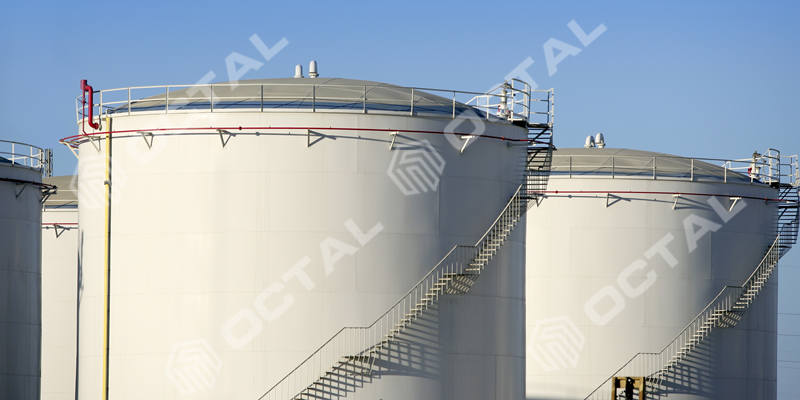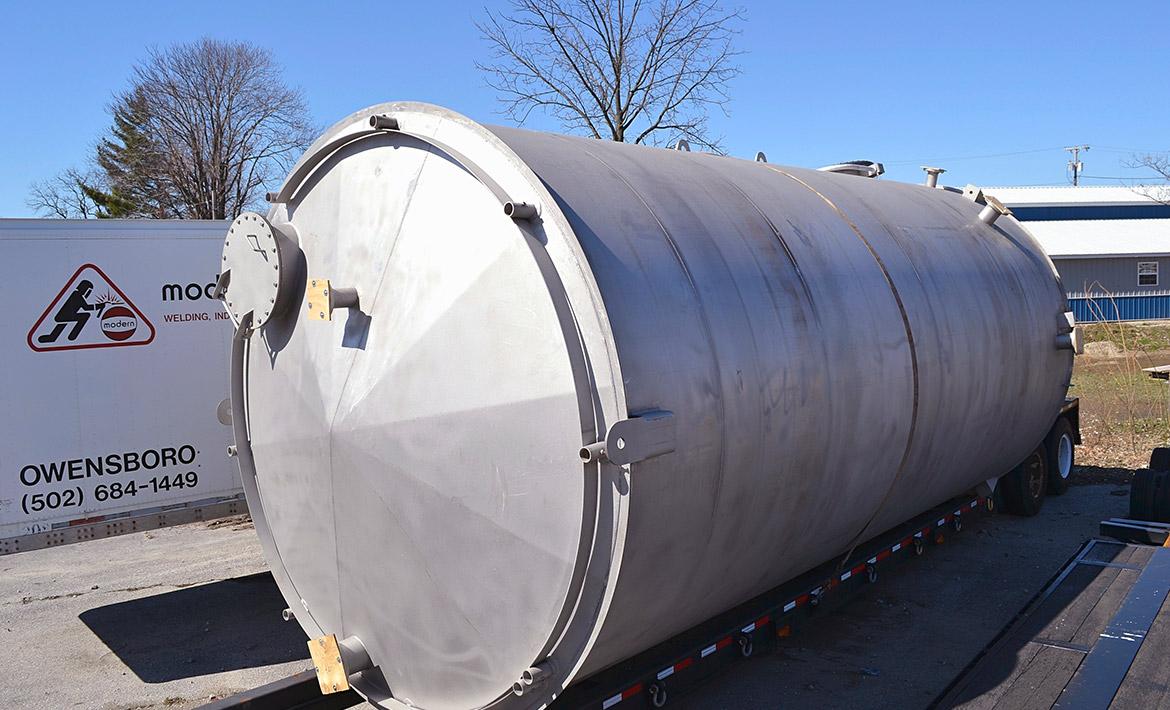How API 650 Welding Inspection Helps Prevent Cracks and Ensures Safety
Wiki Article
Everything About Welding Evaluation: Trick Benefits for Your Tasks
Welding inspection plays an essential function in the building and manufacturing markets. It assures that welded joints fulfill high quality and safety criteria. By determining flaws early, jobs can prevent substantial hold-ups and financial losses. Sticking to industry standards not just secures the honesty of the final product yet likewise builds depend on among stakeholders. Recognizing the nuances of this procedure discloses extra benefits that can affect task results substantially. What are these advantages?Comprehending the Welding Evaluation Process
Welding is an important element in different industries, the evaluation process is necessary to ensure top quality and safety and security. This procedure includes a collection of organized assessments made to identify any potential concerns that might endanger the honesty of bonded joints. Assessors assess welding procedures and qualifications to verify compliance with sector criteria.Following this, visual evaluations are carried out to assess the overall look and finish of welds. Non-destructive screening strategies, such as ultrasonic or radiographic screening, might likewise be utilized to detect inner imperfections without damaging the product. Documentation plays a crucial duty, as it offers a record of evaluations and findings, verifying traceability and liability.
Eventually, recognizing the welding inspection procedure fosters self-confidence in the top quality of the finished product, reduces the risk of failings, and enhances total job success in different applications, from building to manufacturing. API 650 Welding Inspection.
Common Kinds Of Welding Issues
Welding problems can substantially influence the stability and performance of welded structures, as they might result in failings under stress or unfavorable problems. Usual sorts of welding issues consist of splits, porosity, incomplete fusion, and slag incorporation. Fractures can create due to thermal tensions or inappropriate air conditioning, compromising the joint's toughness. Porosity refers to the visibility of gas bubbles trapped in the weld, which can damage the joint and decrease ductility. Insufficient fusion happens when the weld metal does not appropriately bond with the base product, resulting in weak areas. Slag addition occurs when non-metallic pollutants end up being entraped within the weld, resulting in a reduction in architectural honesty. Recognizing these defects early with assessment is necessary for maintaining quality and guaranteeing safety and security in welded frameworks. Comprehending these usual flaws permits for improved welding strategies and enhanced project end results.Importance of Compliance With Industry Criteria
Conformity with industry criteria is necessary for maintaining architectural stability in welding projects. Complying with these criteria not just reduces obligation risks but likewise enhances the overall top quality of the finished work. This positioning fosters depend on among stakeholders and assurances that forecasts satisfy both security and performance assumptions.Making Certain Architectural Honesty
Ensuring structural stability is paramount in any kind of construction or manufacturing project, as adherence to market criteria works as a structure for security and dependability. Conformity with these standards guarantees that welding processes fulfill strenuous specifications, which is important for the longevity of structures. Normal welding evaluations validate that methods and materials align with established standards, protecting against prospective failures that might endanger integrity. Additionally, adhering to market criteria advertises uniformity in top quality, which is crucial for preserving public count on in construction practices. By focusing on structural integrity with attentive adherence to requirements, organizations can improve the total efficiency of their projects, leading to safer atmospheres and extended possession life-spans. Inevitably, this commitment mirrors a proactive technique to top quality guarantee in welding techniques.Minimizing Liability Risks
Sticking to market requirements substantially alleviates obligation risks related to welding projects. Compliance with developed standards warranties that welds satisfy safety and security and performance criteria, lowering the likelihood of failures that can cause accidents or lawsuits. This proactive method not just secures the workforce however also safeguards the financial interests of the company. Poor evaluations or second-rate practices can bring about expensive repair work, lawful conflicts, and damage to reputation. By executing extensive welding inspections, companies demonstrate their dedication to high quality and safety and security, eventually minimizing direct exposure to potential claims. Furthermore, adherence to policies enhances depend on among stakeholders and customers, as it suggests a commitment to keeping high standards throughout the task lifecycle. Decreasing obligation risks is important for long-lasting business sustainability.Enhancing Task High Quality
Rigorous welding examinations not just minimize liability threats however likewise play a critical role in boosting overall task top quality. By sticking to market standards, these examinations guarantee that welds meet specified requirements for strength, durability, and safety. Compliance with developed standards aids recognize problems early, reducing the chance of costly rework or job hold-ups. Consistent high quality control promotes trust amongst stakeholders, including clients and regulative bodies, which can lead to duplicate company and positive references. Inevitably, a commitment to top quality welding techniques not only enhances the stability of the end product yet also supports the reputation of the organization entailed. Complete inspections serve as a foundation for effective and lasting job end results. Effective Advantages of Very Early Discovery of Problems
Early detection of welding concerns supplies considerable advantages, specifically pertaining to price savings on repairs. By determining troubles prior to they rise, companies you could look here can enhance the structural stability of their tasks. This proactive technique not only minimizes monetary expenditures but additionally promotes security and integrity in bonded structures.
Expense Financial Savings on Services
Spotting welding concerns immediately can lead to significant cost savings on repair work. Early recognition of problems permits targeted interventions, lessening the extent of damages and avoiding costly, extensive repair services in the future. When issues are dealt with during the initial stages of a task, resources are used a lot more successfully, reducing both labor and product costs. Additionally, prompt examinations can stop task hold-ups, which typically sustain added expenses. By rectifying concerns early, companies can stay clear of the financial burden linked with rework, guarantee cases, and prospective security hazards. Eventually, investing in positive welding inspections promotes an extra cost-efficient method to job management, making certain that budgets stay intact while maintaining the top quality and dependability of the end product.Improved Structural Honesty
Making certain the architectural honesty of welded components pivots on the timely recognition of possible concerns. Early detection throughout the welding evaluation procedure enables for the immediate correction of issues such as fractures, gaps, or inappropriate fusion. Resolving these concerns quickly not only improves the toughness and resilience of the weld yet additionally reduces the risk of catastrophic failures during the solution life of the structure. Normal inspections add to a much more trusted analysis of weld quality, making certain conformity with market requirements. By prioritizing welding evaluations, task managers can preserve a greater degree of security and performance, eventually resulting in effective job results. Enhanced architectural stability reflects the commitment to top quality and adherence to ideal methods in welding.Cost-Effectiveness of Welding Inspections
While lots of companies might check out welding examinations as an extra cost, they frequently verify to be a cost-effective financial investment in the long run. By identifying issues early, these assessments can stop expensive fixings or substitutes that may develop from unnoticed issues. This aggressive technique Your Domain Name not just saves cash yet likewise decreases task hold-ups, guaranteeing that timelines are followed.
High-grade welding inspections contribute to improved effectiveness, leading to less rework circumstances and improved efficiency. The decrease in material waste and labor costs related to redesigning damaged welds contributes to the economic benefits.
Spending in complete assessments likewise improves the general top quality of the end product, which can result in enhanced client contentment and repeat service. Inevitably, the initial costs related to welding examinations are usually exceeded by the long-term cost savings and benefits they give, making them a wise choice for any welding task.
Enhancing Safety and Reliability in Welding Projects

Welding examinations play a crucial duty in improving security and integrity within welding tasks, as they systematically identify prospective risks and weaknesses in welds. By using qualified inspectors, companies can assure that welding procedures comply with market criteria and regulative requirements. This positive technique decreases the threat of weld failings, which can result in crashes, expensive repair work, and job delays.
Examinations offer essential documents that confirms compliance and quality guarantee, promoting trust in between stakeholders. Routine analyses throughout numerous job stages permit the timely discovery of problems, enabling corrective activities before they escalate. In addition, the insights acquired from inspections add to constant renovation in welding practices, boosting total job outcomes. Inevitably, durable welding examination methods not only secure workers however likewise protect financial investments, assuring that tasks are completed effectively and meet the highest possible safety and dependability straight from the source standards.
Regularly Asked Inquiries
What Credentials Should a Welding Inspector Have?
A welding examiner must have appropriate qualifications, such as Certified Welding Examiner (CWI), along with extensive knowledge of welding codes, procedures, and products. API 650 Welding Inspection. Experience in the area and strong logical abilities are additionally vital for reliable examinationsJust How Typically Should Welding Inspections Be Carried Out?
Welding examinations must be conducted on a regular basis, usually in the past, throughout, and after the welding procedure. The regularity may depend upon task specs, governing demands, and the complexity of the welds to ensure structural stability and safety.Can Welding Inspections Be Done From Another Location?
Welding assessments can without a doubt be done from another location, using advanced modern technologies such as drones, cameras, and ultrasonic screening tools - API 650 Welding Inspection. This approach allows for effective surveillance while minimizing the need for physical visibility at the siteWhat Tools Are Made Use Of in Welding Inspections?
Welding evaluations use different tools, consisting of ultrasonic testers, magnetic fragment testers, aesthetic examination devices, radiographic devices, and calipers. Each device offers a certain purpose to ensure weld honesty, quality, and conformity with sector standards.Just how Do I Choose a Welding Examination Service?

To choose a welding inspection solution, one ought to review credentials, experience, and accreditations. In addition, evaluating customer endorsements and requesting in-depth service summaries can help ensure the picked service meets details task requirements properly.
By focusing on welding evaluations, job managers can maintain a greater degree of safety and security and efficiency, ultimately leading to effective task results. Welding examinations play an important role in boosting safety and security and dependability within welding tasks, as they systematically identify potential hazards and weaknesses in welds. A welding inspector must possess pertinent certifications, such as Certified Welding Inspector (CWI), along with comprehensive expertise of welding materials, procedures, and codes. Welding examinations ought to be performed consistently, normally previously, during, and after the welding procedure. Welding assessments utilize various devices, including ultrasonic testers, magnetic bit testers, visual evaluation tools, radiographic tools, and calipers.
Report this wiki page